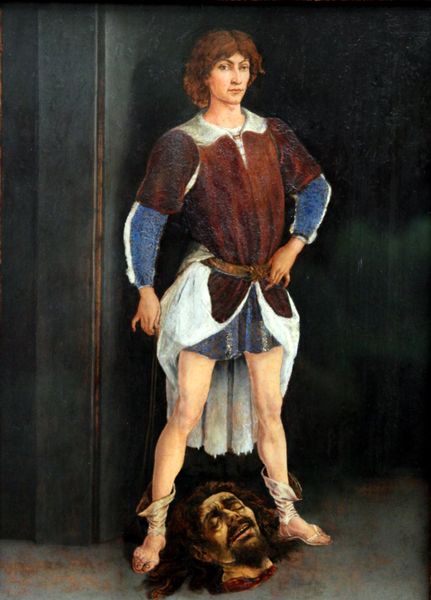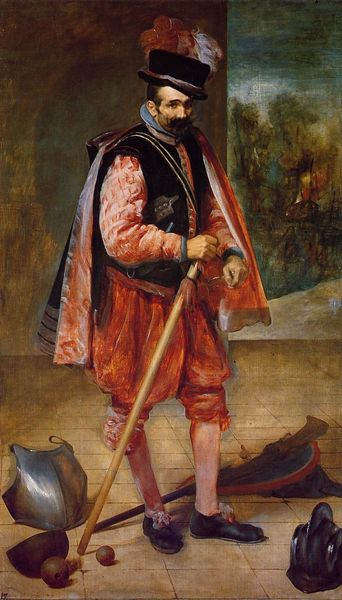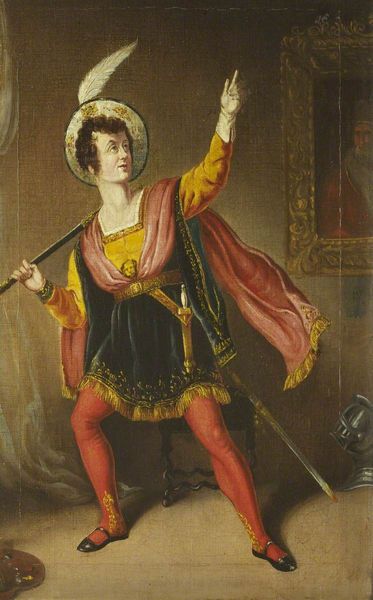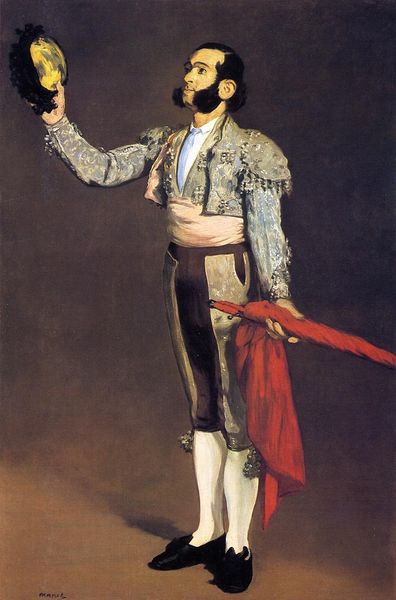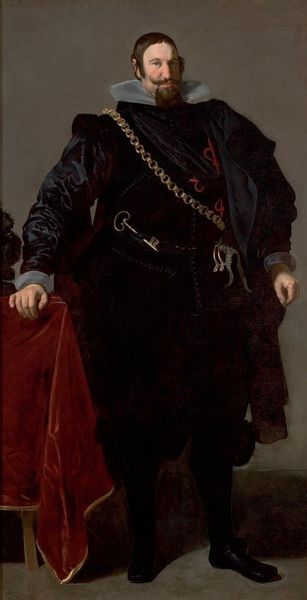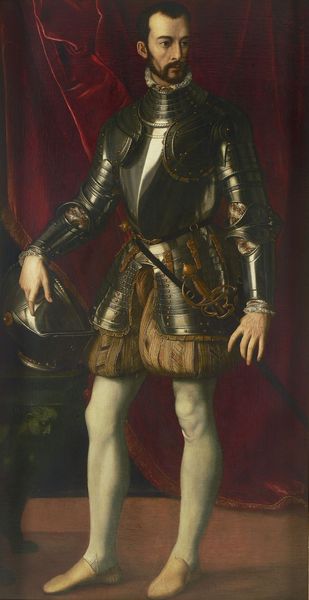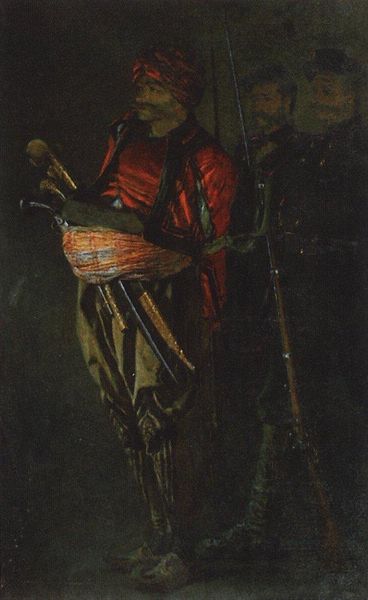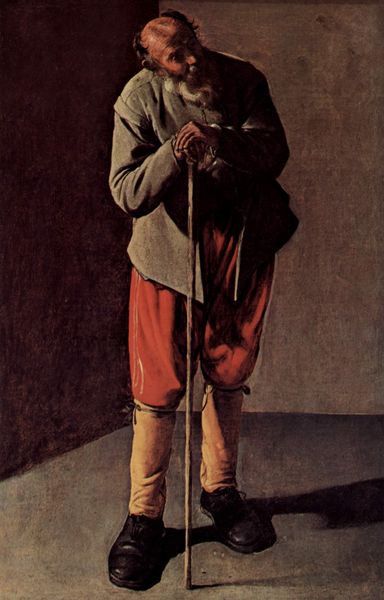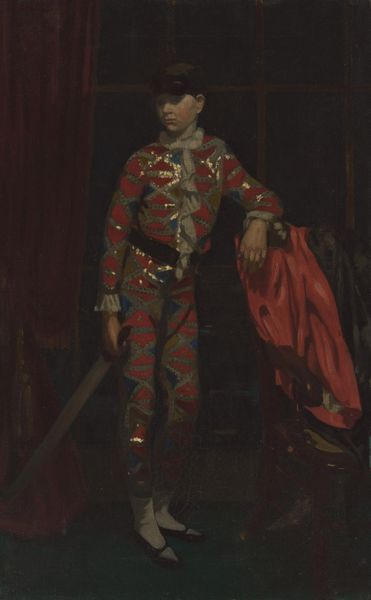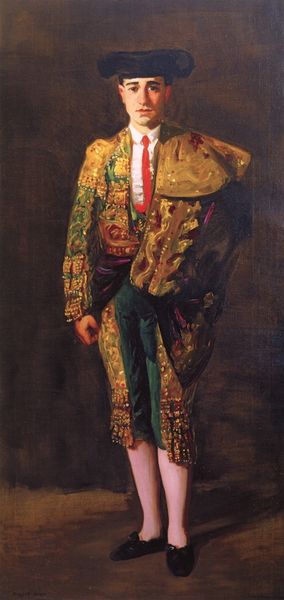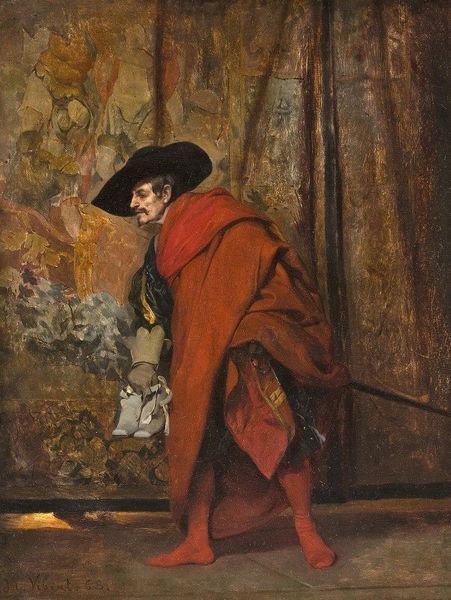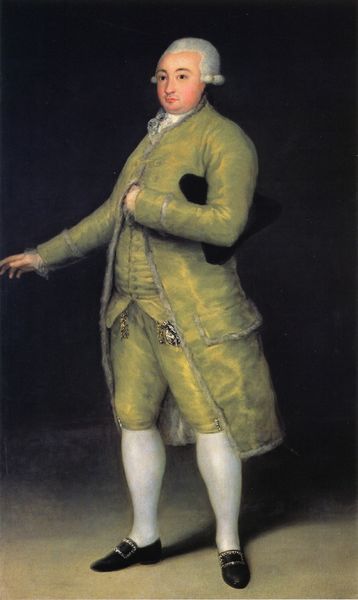
Copyright: Public domain
Editor: This is Renoir's "The Clown (James Bollinger Mazutreek)," painted in 1868 using oil paint. The subdued colors create a somewhat melancholy mood for a clown portrait, which I find quite intriguing. What social dynamics do you see at play here? Curator: I’m struck by how this work, though seemingly a simple portrait, intersects with broader theatrical culture. The circus, a rising form of popular entertainment in the mid-19th century, presented opportunities and challenges for artistic representation. Renoir situates us in this very world by the painted view into the theater boxes. Consider the clown not just as an individual, but as a figure caught between the spectacle and its reception, positioned by Renoir almost as if under examination by the audience in the boxes. The figure's presentation invites our analysis – but do we have to look at his individual genius and talent? Or is it the system he's in that calls for our consideration? Editor: That's a fascinating perspective! I hadn't thought about it as a commentary on spectacle. It does make you question the artist's intentions, whether he aimed to glorify or perhaps subtly critique the commodification of entertainment and entertainers at the time. Curator: Exactly! Renoir, and Impressionists generally, were engaging with contemporary life, and what this clown portrait does, by showing us all those people up in the box seats, is ask us to consider who gets to look, and at whom. I also like to wonder if it is commenting on the rise of museums as locations for looking at others... and even other things... displayed. Does thinking about the museum context influence your interpretation at all? Editor: Absolutely, reframing it within the museum setting highlights those layers of observation and objectification, something that shifts its resonance, especially viewing it now! Thanks for shedding light on those socio-historical contexts.
Comments
No comments
Be the first to comment and join the conversation on the ultimate creative platform.
